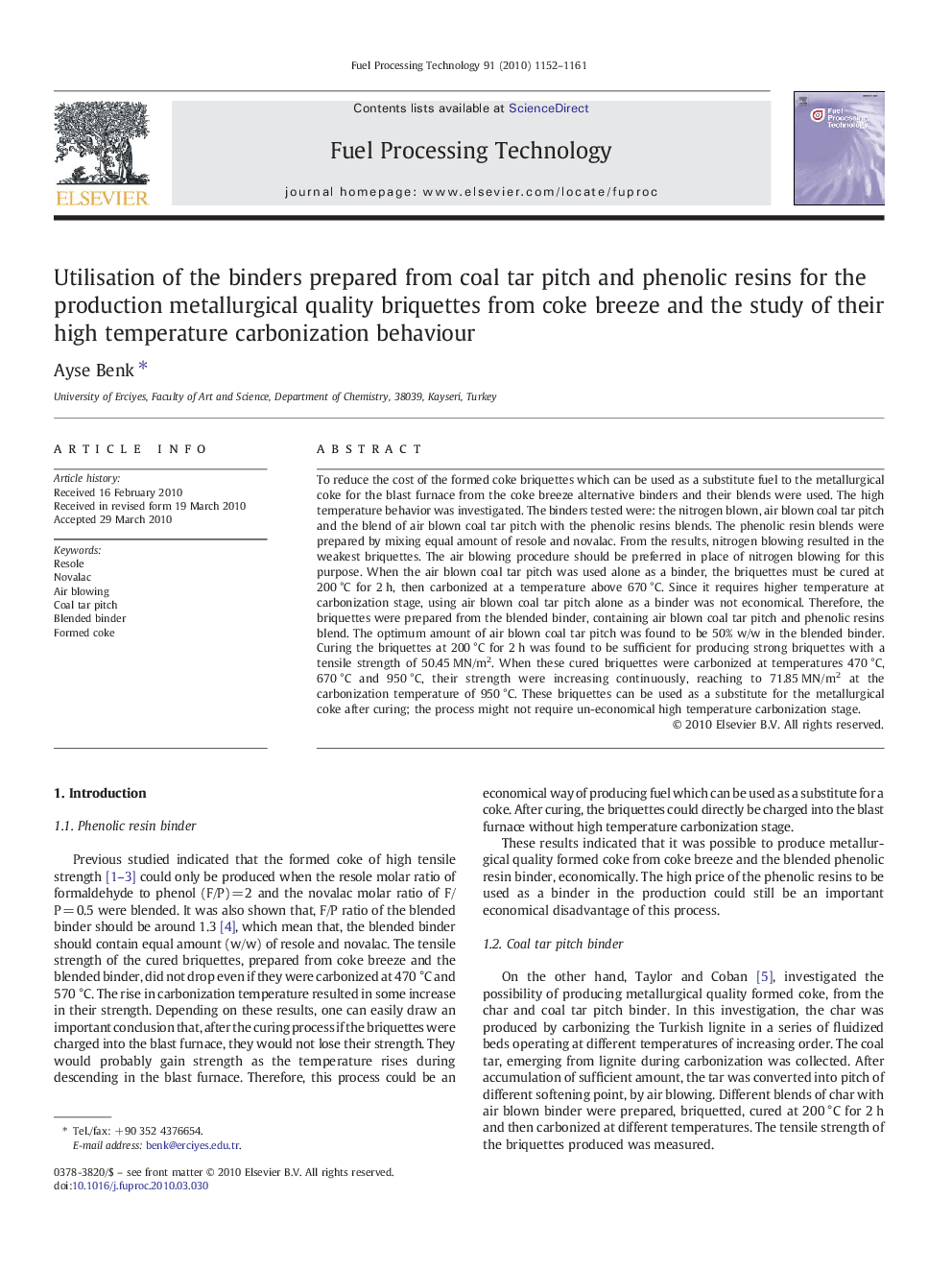| Article ID | Journal | Published Year | Pages | File Type |
|---|---|---|---|---|
| 211062 | Fuel Processing Technology | 2010 | 10 Pages |
To reduce the cost of the formed coke briquettes which can be used as a substitute fuel to the metallurgical coke for the blast furnace from the coke breeze alternative binders and their blends were used. The high temperature behavior was investigated. The binders tested were: the nitrogen blown, air blown coal tar pitch and the blend of air blown coal tar pitch with the phenolic resins blends. The phenolic resin blends were prepared by mixing equal amount of resole and novalac. From the results, nitrogen blowing resulted in the weakest briquettes. The air blowing procedure should be preferred in place of nitrogen blowing for this purpose. When the air blown coal tar pitch was used alone as a binder, the briquettes must be cured at 200 °C for 2 h, then carbonized at a temperature above 670 °C. Since it requires higher temperature at carbonization stage, using air blown coal tar pitch alone as a binder was not economical. Therefore, the briquettes were prepared from the blended binder, containing air blown coal tar pitch and phenolic resins blend. The optimum amount of air blown coal tar pitch was found to be 50% w/w in the blended binder. Curing the briquettes at 200 °C for 2 h was found to be sufficient for producing strong briquettes with a tensile strength of 50.45 MN/m2. When these cured briquettes were carbonized at temperatures 470 °C, 670 °C and 950 °C, their strength were increasing continuously, reaching to 71.85 MN/m2 at the carbonization temperature of 950 °C. These briquettes can be used as a substitute for the metallurgical coke after curing; the process might not require un-economical high temperature carbonization stage.
